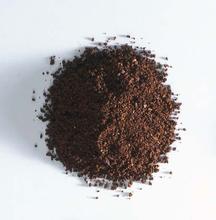The comparison between siphon and hand, the scale of the lower pot of the siphon pot, what coffee beans should be used in the siphon pot

I found that I have a complex for siphon pots, mainly from my experience of washing petri dishes and test tubes for no less than 10000 times in the microbiology laboratory. I can wash them without dripping water on them (there is no technical difficulty). But no matter how much you wash the siphon pot, it's impossible to do it.
Comparison between siphon and hand flushing
We have said that "in general, the thickness of coffee powder is proportional to the extraction time", that is to say, the thicker the coffee powder, the longer the extraction time, and the finer the extraction time is. If the kettle is pressed for about 4 minutes, the Italian style is concentrated for about 30 seconds. Of course this is not absolute. The coffee powder used for siphon can be coarse or fine, even as concentrated as Italian, as long as you know how to balance the water temperature, stirring, firepower, etc. (but don't be too fine to block the strainer). Hand flushing is different.
On the water temperature of both, the water temperature of hand washing will gradually decrease, while the siphon will continue to heat, and the siphon pot can make the hand effect more easily (light or less stirring, low water temperature, coarse powder, short time). However, it is difficult to make the siphon coffee effect (conjecture-need to be verified in practice).

Some people ask, how many milliliters is the "three-person" in the siphon pot for three people? This is a good question, many people have asked it, but it is not easy to get a detailed answer. Quite simply, the volume of coffee in the coffee cup after siphon making is about 100ml, 200ml and 300ml for one person and three people, respectively, but this is not the definition for the water scale under the siphon pot.
The experimental results show that every 1g of powder absorbs 2~3ml water. In order to keep the final coffee liquid about 100ml, 120~130ml water is needed in the case of 10g powder per person. As a result, 20g flour for two people needs 240,260 water, and 30g flour for three people needs 360~390ml water. That is to say, there is a water gradient of 120 to 130.
I have verified that the 3-person share of Hario (Glass King, Japanese brand) is about 390ml, that is to say, the water gradient of 130mm 260Gash 390 (different brands may be different; Taiwan-made siphon pots may also be different from Japanese-made siphon pots), so it is very clear that the powder ratio of 112mm 115 can be converted into the required amount of powder, which can be added or subtracted according to individual taste.
As long as you know that's what you want, no one will say "no". If you say so, you can think of the biggest difference between Buddhism and Christianity: Buddhism has room for people all over the world, including pagans, while Christianity says that pagans will go to hell. Russell says that jagged polymorphism is the source of happiness. This is how coffee is made.

When you encounter a difference, you can ask why it is different and don't deny it easily, but it will be more interesting to have a clear idea in the industry. However, in my understanding, "willfulness" should be a kind of "restrained freedom".
Source: Yiwuyi
Important Notice :
前街咖啡 FrontStreet Coffee has moved to new addredd:
FrontStreet Coffee Address: 315,Donghua East Road,GuangZhou
Tel:020 38364473
- Prev

The aroma components of coffee are easy to dissipate. How to preserve the best aroma quality of coffee?
The aroma components tend to dissipate the rich aroma of fresh coffee when ground, inspiring poets for hundreds of years. In order to capture these aromas in coffee cups, all kinds of beautiful shapes and strange coffee machines have come out one after another, thus achieving this arduous super task. Why is it so difficult to make brewed coffee as fragrant as freshly ground coffee?
- Next

Principle of siphon pot coffee powder thick and thin siphon pot filter cloth cleaning siphon pot what kind of coffee is suitable for brewing
Different coffee utensils grind different sizes of coffee powder siphon coffee brewing utensils such as: Belgian royal coffee brewer, siphon pot also known as TCA principle: using the siphon principle, the boiling hot water is washed onto the coffee powder and stewed to produce the original flavor of the coffee. Suitable for coffee: slightly sour, medium-mellow coffee grindability: slightly thicker than powder, close to fine granulated sugar Tips: the work of each siphon pot
Related
- What is the meaning of lactic acid fermentation with coffee bean treatment?
- How to judge the state of foam by sound?
- How does the latte pull out the unicorn pattern? Come to get for a little trick to improve the flower pull!
- Will flower pulling affect the taste of the latte?
- Do you know the history of coffee?
- The difference between honey treatment and sun washing what is raisin honey treatment?
- What kind of milk can a novice use to make coffee foam to keep the foam longer? The correct method and skills of milking tutorial sharing
- Why do washed coffee beans taste sour? Flavor characteristics of washed Coffee
- Introduction to the skill of how to practice the size and height of water injection around the circle of hand-brewed coffee
- How do beginners practice coffee flower drawing from scratch?

